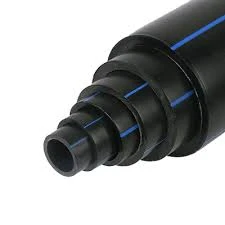Oct . 21, 2024 21:47 Back to list
Durable and Reliable HDPE Water Pipes for Efficient Water Supply Solutions
The Benefits and Applications of HDPE Water Pipes
High-Density Polyethylene (HDPE) pipes are increasingly becoming the preferred choice for water distribution systems worldwide. Known for their exceptional durability, flexibility, and corrosion resistance, HDPE pipes offer numerous advantages over traditional piping materials such as PVC, concrete, and metal. This article explores the benefits of HDPE water pipes and their various applications.
Durability and Longevity
One of the most significant advantages of HDPE pipes is their outstanding durability. HDPE is resistant to many chemicals, making it an ideal choice for transporting potable water. Unlike metal pipes, which can corrode over time, HDPE pipes are not susceptible to rust, leading to a longer lifespan—often exceeding 50 years. The ability of HDPE to withstand extreme weather conditions, including low temperatures and UV exposure, further enhances its durability.
Flexibility and Lightweight Design
HDPE pipes are exceptionally flexible compared to traditional piping materials, allowing for easier installation, even in difficult terrains. Their lightweight nature significantly reduces transportation and handling costs. This flexibility also allows HDPE pipes to be installed in tight spaces without the need for extensive excavation, making them an environmentally friendly option, as less disruption to the surrounding landscape is necessary.
Resistance to Leaks and Bursts
Leakage is a significant concern in water distribution systems, leading to water loss and costly repairs. HDPE pipes feature a smooth interior surface that reduces friction and minimizes the potential for leaks. Their strength and flexibility enable them to absorb stress without cracking or bursting, even under high pressure. This resilience makes HDPE an ideal choice for areas prone to earthquakes or subsidence.
hdpe water pipe

Environmental Sustainability
The environmental impact of piping materials is a vital consideration for modern infrastructure projects. HDPE pipes are manufactured from recycled materials and can also be recycled at the end of their life cycle. Their long lifespan reduces the frequency of replacements, lessening the strain on natural resources. Additionally, HDPE pipes can help reduce water loss through leaks, contributing to more sustainable water management practices.
Applications of HDPE Water Pipes
The versatility of HDPE water pipes allows for a wide range of applications. They are extensively used in municipal water supply systems, irrigation, and agricultural applications. In urban settings, HDPE pipes help facilitate wastewater management, stormwater drainage, and clean water supply.
In rural areas, HDPE pipes are often employed in irrigation systems, allowing farmers to efficiently manage water resources for crop production. The lightweight and flexible nature of HDPE makes it easy to transport to remote locations and install in challenging environments.
Industries such as mining and construction also benefit from the use of HDPE pipes. These pipes are ideal for transporting liquids and gases, providing a reliable solution for various industrial applications. Their resistance to chemical corrosion ensures that they can safely handle hazardous materials.
Conclusion
In conclusion, HDPE water pipes are revolutionizing the way we think about water distribution systems. Their remarkable durability, flexibility, and resistance to leaks make them an exceptional choice for both municipal and industrial applications. Furthermore, the environmental benefits associated with their use align with the global shift toward sustainable practices. As more infrastructure projects begin to incorporate HDPE pipes, we can expect improved resource management and reduced environmental impact in the realm of water distribution. Ultimately, HDPE pipes symbolize a modern approach to addressing the challenges of water scarcity and infrastructure resiliency in our ever-changing world.
-
High-Quality PPR Pipes and Fittings Durable ERA PPR & PVC PPR Solutions
NewsJul.08,2025
-
Black HDPE Cutting Board - Durable, Non-Porous & Food Safe HDPE Plastic Cutting Board
NewsJul.08,2025
-
High-Quality CPVC Panel Durable HDPE & PVC Panels Supplier
NewsJul.08,2025
-
Double PE Welding Rod Supplier - High Strength, Durable & Versatile Welding Solutions
NewsJul.07,2025
-
High-Quality PVC-O Pipe Supplier Durable 75mm PVC Pipe & Connections Leading PVC Pipe Company
NewsJul.07,2025
-
HDPE Drainage Pipe Supplier – Durable & Corrosion-Resistant Solutions
NewsJul.06,2025

